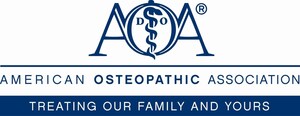Family Medicine Top Specialty for Future Osteopathic Physicians
CHICAGO, Feb. 13, 2012 /PRNewswire-USNewswire/ -- As the country faces a projected shortage of 45,000 primary care physicians by the year 2020, osteopathic medical students are stepping up to fill that void. Family medicine continues to be the largest matched specialty among osteopathic medical students, according to the National Matching Services, Inc., which announced the results of the 2012 osteopathic match today.
Of the 2,373 individuals who participated in the American Osteopathic Association (AOA) Intern/Resident Registration Program, 75% of students and recent graduates successfully matched for a total of 1,767 placements. Last year, there were 1,640 successful matches.
Primary care specialties of family medicine saw a 16% increase and internal medicine saw a 21% increase from last year. Family medicine was the largest matched specialty with 433 positions filled. Last year family medicine also was the largest matched specialty with 373 positions filled.
"Each year an increasing number of osteopathic medical graduates are matched successfully into funded AOA residency positions. With the rate of annual increase noted and the success of the osteopathic post-match scramble, it is anticipated that virtually all available funded AOA positions will be filled in the next year or two," said Michael I. Opipari, DO, chair of the AOA Council on Postdoctoral Training. "In addition, we continue to see a significant increase in primary care specialty matches."
According to the AOA's 2011 Osteopathic Medical Profession Report, approximately half of osteopathic physicians (DOs) practice in the primary care areas, such as family medicine and internal medicine. Historically, DOs have had a special commitment to providing primary care, particularly in the nation's rural and underserved populations.
"As one of 20 DOs in my family, I have seen the legacy of the osteopathic medical profession being carried on by many generations of osteopathic medical students," said AOA President Martin S. Levine, DO. "Their contributions to all areas of medicine, including primary care, are essential in meeting our nation's health care needs. I wish the participants of this year's osteopathic match much success as they begin their new careers as practicing osteopathic physicians."
For more information about the 2012 osteopathic match, see full match results listed by state at www.osteopathic.org. To see osteopathic match data from previous years, see the JAOA—The Journal of the American Osteopathic Association at www.jaoa.org.
How the Osteopathic Match Works
Osteopathic medical students and recent graduates interview with internship and residency training programs at medical facilities around the country to determine which programs they would like to apply to for their osteopathic graduate medical education. After the interview process, match participants submit a rank-order list of training programs while the programs submit a list of their preferred applicants in rank order. Using a computer program, the National Matching Services, Inc., coordinates the match of osteopathic medical students and recent graduates to internship and residency programs.
Osteopathic Match Schedule
Applicants who learn on Feb. 13 that they did not match into an internship or residency training program can participate in what is known as "the scramble." Additional students and previous graduates will continue to find training positions through July this year. This year, an electronic post-match tool is available to assist programs and trainees who did not find placement in the match.
Upon earning degrees as doctors of osteopathic medicine, graduates will begin their training programs on July 1, 2012.
What is a DO?
DOs and MDs are the only two groups of physicians fully licensed to prescribe medication and practice in all specialty areas, including surgery, in the United States. They both complete approximately four years of medical school followed by graduate medical education through internship and residency programs typically lasting three to eight years. In addition, DOs receive extra training in the musculoskeletal system, providing them with an in-depth knowledge of the ways that illness or injury in one part of the body can affect another.
About the American Osteopathic Association
The American Osteopathic Association (AOA) proudly represents its professional family of more than 78,000 osteopathic physicians (DOs); promotes public health; encourages scientific research; serves as the primary certifying body for DOs; is the accrediting agency for osteopathic medical schools; and has federal authority to accredit hospitals and other health care facilities. More information on DOs/osteopathic medicine can be found at www.osteopathic.org.
SOURCE American Osteopathic Association
WANT YOUR COMPANY'S NEWS FEATURED ON PRNEWSWIRE.COM?
Newsrooms &
Influencers
Digital Media
Outlets
Journalists
Opted In






Share this article